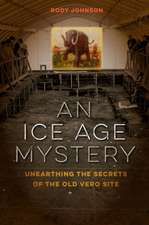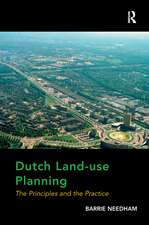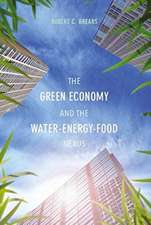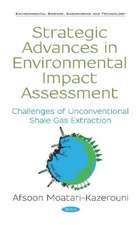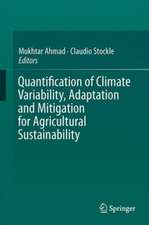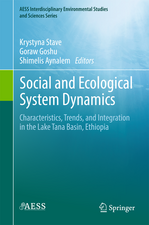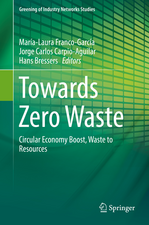Chasing the Wind: Inside the Alternative Energy Battle
Autor Rody Johnsonen Limba Engleză Paperback – 30 mar 2014
Over the past few decades, the vexing problems of climate change and finite resources have ignited contentious global debates about alternative energy technologies. In this lucid, balanced book, Rody Johnson investigates the development and deployment of one such technology—wind power—and, in particular, the ways in which a heated battle over that energy source played out in an Appalachian community.
Johnson’s wide-ranging account examines the history of wind power; its capacity and output in comparison to such sources as fossil fuels, other renewables, and nuclear energy; the infrastructural challenges of transmitting electricity from wind farms to end users; global efforts to curb carbon emissions, including the Kyoto treaty; the role of public policy, government subsidies, and tax breaks; and the differences and similarities between wind power regimes in the United States and Europe.
Interwoven throughout this discussion is the compelling narrative of how, beginning in 2005, the proposed construction of a wind farm along mountain ridges in Greenbrier
County, West Virginia, pitted locals against each other—a story that puts a human face on the arguments about wind power’s promise of clean, renewable energy and its potentially negative effects, including bird and bat kills, a disfigured natural landscape, and noise pollution. Drawing on countless hours he spent attending public meetings and interviewing those on both sides of the issue, Johnson not only pictures the Greenbrier County struggle in illuminating detail but also makes valuable comparisons between it and similarly pitched battles in another West Virginia county, where a wind farm had already been built, and in Florida, where plans to erect beachside wind turbines next to a nuclear plant faltered.
Concluding with a thoughtful, realistic assessment of a 2012 study suggesting that the country has the capability of receiving 80 percent of its electrical generation from
renewables by 2050, Chasing the Wind makes a vital contribution to the ongoing dialogue regarding America’s energy challenges and what is likely required to meet them.
Johnson’s wide-ranging account examines the history of wind power; its capacity and output in comparison to such sources as fossil fuels, other renewables, and nuclear energy; the infrastructural challenges of transmitting electricity from wind farms to end users; global efforts to curb carbon emissions, including the Kyoto treaty; the role of public policy, government subsidies, and tax breaks; and the differences and similarities between wind power regimes in the United States and Europe.
Interwoven throughout this discussion is the compelling narrative of how, beginning in 2005, the proposed construction of a wind farm along mountain ridges in Greenbrier
County, West Virginia, pitted locals against each other—a story that puts a human face on the arguments about wind power’s promise of clean, renewable energy and its potentially negative effects, including bird and bat kills, a disfigured natural landscape, and noise pollution. Drawing on countless hours he spent attending public meetings and interviewing those on both sides of the issue, Johnson not only pictures the Greenbrier County struggle in illuminating detail but also makes valuable comparisons between it and similarly pitched battles in another West Virginia county, where a wind farm had already been built, and in Florida, where plans to erect beachside wind turbines next to a nuclear plant faltered.
Concluding with a thoughtful, realistic assessment of a 2012 study suggesting that the country has the capability of receiving 80 percent of its electrical generation from
renewables by 2050, Chasing the Wind makes a vital contribution to the ongoing dialogue regarding America’s energy challenges and what is likely required to meet them.
Preț: 154.65 lei
Nou
Puncte Express: 232
Preț estimativ în valută:
29.59€ • 31.64$ • 24.67£
29.59€ • 31.64$ • 24.67£
Carte disponibilă
Livrare economică 28 martie-11 aprilie
Preluare comenzi: 021 569.72.76
Specificații
ISBN-13: 9781621900290
ISBN-10: 1621900290
Pagini: 175
Ilustrații: 24 photos, 11 tables
Dimensiuni: 152 x 229 x 13 mm
Greutate: 0.28 kg
Ediția:Second Edition
Editura: University of Tennessee Press
Colecția Univ Tennessee Press
ISBN-10: 1621900290
Pagini: 175
Ilustrații: 24 photos, 11 tables
Dimensiuni: 152 x 229 x 13 mm
Greutate: 0.28 kg
Ediția:Second Edition
Editura: University of Tennessee Press
Colecția Univ Tennessee Press
Notă biografică
Rody Johnson is a freelance writer and a retired aerospace engineer with residences in Vero Beach, Florida, and Lewisburg, West Virginia. He is the author of Different Battles: The Search for a World War II Hero, In Their Footsteps: Explorers, Warriors, Capitalists, and Politicians of West Virginia, and The Rise and Fall of Dodgertown: 60 Years of Baseball in Vero Beach.
Extras
Prologue
Arriving like a summer storm, wind energy became an issue both where I live in Florida and where I spend my summers in West Virginia. In the winter of 2006, I began to notice a series of letters to the editor in the weekly newspaper serving Greenbrier County, West Virginia. The letters objected to plans to install a huge wind farm on nearby mountain ridges. My first exposure to wind energy had come years earlier, upon seeing the conglomeration of windmills in a desert valley while driving east from Los Angeles. It was an interesting sight, rather unique, but in my mind just one of those California things. I was amazed to learn that a wind farm already existed in West Virginia and even more so that wind turbines might appear on Florida beaches.
In Lewisburg, West Virginia, I found a battle that was tearing a community apart. The situation dominated the local news. I talked with people for and against the wind farm, went to meetings and hearings, and visited the heads of the opposition groups. In time, I made contact with the wind farm developer to get his perspective. Initially I developed biases against wind energy based on the local situation, since it seemed to do little good for the community and was so divisive. The local politics added to the conflict. Meanwhile, with Al Gore leading the way, the climate change issue became popular, though I wasn’t sure I believed in all that was being said. I wanted to get an understanding of that situation as well.
Then wind energy surfaced as an issue near my home in Florida. NextEra Energy (formerly FPL Group), a corporation that owned a vast percentage of the wind energy capacity in the United States, planned to place turbines on the beach near one of its nuclear power plants. Thus another battle began.
As I expanded my research, I learned about the history of wind power, sought out the experiences that were being had in other parts of the United States, and studied what was going on in Europe—the early world leader in the use of renewable resources. My thinking about wind began to broaden. Wind had its place. But was it going to lead the way in reducing the world’s greenhouse gas emissions, as one gathers from the developers who will profit from it, from the media who report on it, and from the politicians who use it to build their careers? Does it justify the government subsidies it receives?
I needed to expand my perspective and look at other energy resources besides wind. Coal was king in West Virginia, but in Florida the full breath of resources were being explored—coal has been rejected, but natural gas, nuclear, solar, and wind energy were active considerations in the growing demand for power. And what about conservation?
In northern West Virginia, I visited an established wind farm and talked with people who lived nearby. In Greenbrier County I watched a wind farm transform miles of ridgetop. In Florida I took a tour of a planned beachfront wind farm and visited the nearby nuclear power plant. And during all of this, I continued to talk with people on both sides of the issue and read everything I could find. I also attended a forum on wind energy.
My sources included the few books that have been written specifically on the subject, many current newspaper and magazine articles, various technical and economic reports, and the Internet. The latter provided a wide breath of information, some of it opinionated. The subject is controversial and, therefore, searching for the truth was challenging.
This book is the story of wind energy as I have discovered it. I have tried to leave my biases behind and to present the issues so that readers can draw their own conclusions. The issue: Should we believe in wind energy as a significant solution to preventing climate change?
Arriving like a summer storm, wind energy became an issue both where I live in Florida and where I spend my summers in West Virginia. In the winter of 2006, I began to notice a series of letters to the editor in the weekly newspaper serving Greenbrier County, West Virginia. The letters objected to plans to install a huge wind farm on nearby mountain ridges. My first exposure to wind energy had come years earlier, upon seeing the conglomeration of windmills in a desert valley while driving east from Los Angeles. It was an interesting sight, rather unique, but in my mind just one of those California things. I was amazed to learn that a wind farm already existed in West Virginia and even more so that wind turbines might appear on Florida beaches.
In Lewisburg, West Virginia, I found a battle that was tearing a community apart. The situation dominated the local news. I talked with people for and against the wind farm, went to meetings and hearings, and visited the heads of the opposition groups. In time, I made contact with the wind farm developer to get his perspective. Initially I developed biases against wind energy based on the local situation, since it seemed to do little good for the community and was so divisive. The local politics added to the conflict. Meanwhile, with Al Gore leading the way, the climate change issue became popular, though I wasn’t sure I believed in all that was being said. I wanted to get an understanding of that situation as well.
Then wind energy surfaced as an issue near my home in Florida. NextEra Energy (formerly FPL Group), a corporation that owned a vast percentage of the wind energy capacity in the United States, planned to place turbines on the beach near one of its nuclear power plants. Thus another battle began.
As I expanded my research, I learned about the history of wind power, sought out the experiences that were being had in other parts of the United States, and studied what was going on in Europe—the early world leader in the use of renewable resources. My thinking about wind began to broaden. Wind had its place. But was it going to lead the way in reducing the world’s greenhouse gas emissions, as one gathers from the developers who will profit from it, from the media who report on it, and from the politicians who use it to build their careers? Does it justify the government subsidies it receives?
I needed to expand my perspective and look at other energy resources besides wind. Coal was king in West Virginia, but in Florida the full breath of resources were being explored—coal has been rejected, but natural gas, nuclear, solar, and wind energy were active considerations in the growing demand for power. And what about conservation?
In northern West Virginia, I visited an established wind farm and talked with people who lived nearby. In Greenbrier County I watched a wind farm transform miles of ridgetop. In Florida I took a tour of a planned beachfront wind farm and visited the nearby nuclear power plant. And during all of this, I continued to talk with people on both sides of the issue and read everything I could find. I also attended a forum on wind energy.
My sources included the few books that have been written specifically on the subject, many current newspaper and magazine articles, various technical and economic reports, and the Internet. The latter provided a wide breath of information, some of it opinionated. The subject is controversial and, therefore, searching for the truth was challenging.
This book is the story of wind energy as I have discovered it. I have tried to leave my biases behind and to present the issues so that readers can draw their own conclusions. The issue: Should we believe in wind energy as a significant solution to preventing climate change?
Recenzii
“Rody Johnson’s Chasing the Wind is first-rate journalism that makes significant contributions to
our understanding of the rise of wind energy production in both the U.S. and abroad. Wind power
will certainly play a major role in the energy mix of the future, especially if America is to move
beyond its current dependence on fossil fuels.” —Donald Edward Davis, author of Where There
Are Mountains: An Environmental History of the Southern Appalachians
our understanding of the rise of wind energy production in both the U.S. and abroad. Wind power
will certainly play a major role in the energy mix of the future, especially if America is to move
beyond its current dependence on fossil fuels.” —Donald Edward Davis, author of Where There
Are Mountains: An Environmental History of the Southern Appalachians
Descriere
An investigation of the development and deployment of wind power and the ways in which a heated battle over renewable energy played out in an Appalachian community.

